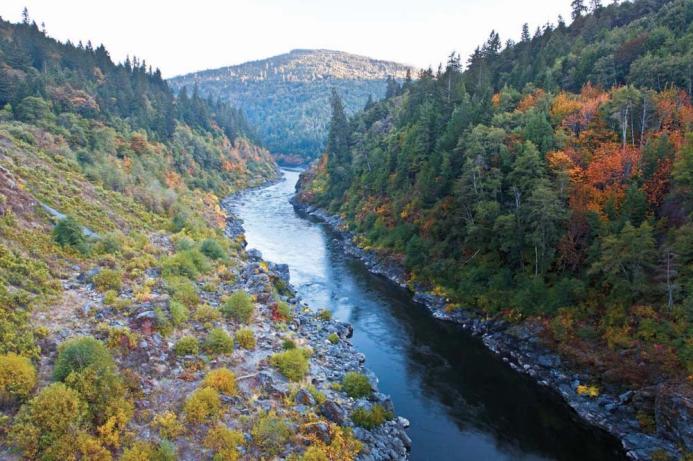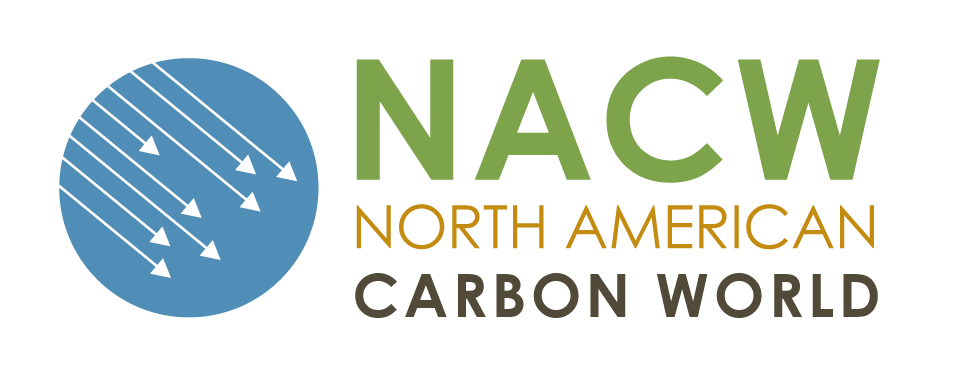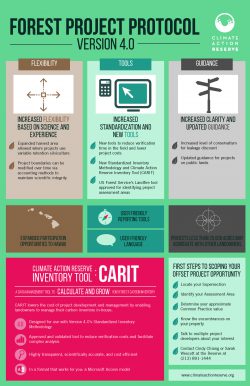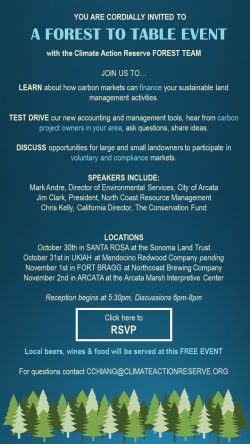Greetings from the Forestry Team!
As of this blog’s posting, the Climate Action Reserve has issued over 100,000,000 (!!) offset credits to projects developed with the purpose of eliminating dangerous greenhouse gases from our atmosphere. That’s the equivalent of taking more than 21,000,000 cars off the road for one year! Our small team of five is proud to be a part of this critical effort to combat climate change, and we continue to push ourselves every day to drive the Reserve’s mission: to develop, promote and support innovative, credible market-based climate change solutions that benefit economies, ecosystems and society.
To that end, we are excited to unveil a suite of tools and carbon accounting methodology updates geared towards increasing equitable access to the carbon market for all landowner types. As forests have historically served, and will continue to serve, as an indispensable source of carbon sequestration, our team has set our sights on opening the carbon market to medium and small land owners by lowering the cost of project development. Check out this cool video from the Oregon Forest Resources Institute for why forests are awesome.
In 2003 when our team first hunkered down with diverse stakeholders to design the first Forest Project Protocol through a public process, our goal was to create a new revenue stream for forest managers to manage their lands for highly productive, structurally diverse forests that support natural ecosystem processes. We accomplished this goal by setting rules, standards, and rigorous carbon accounting methodologies that gave forest offset projects, and the credits that resulted from these projects, market legitimacy. This means when someone buys a Reserve offset credit (Climate Reserve Tonne or CRT), he or she knows and trusts that each credit holds the highest scientific and environmental integrity and truly represents one metric ton of carbon reduced compared with business as usual activities. Furthermore, our online registry ensures that anyone interested can track each credit back to the owner and follow the publicly available accounting methodology to validate the environmental value of credits.
Based on our expertise, compliance grade standards and methodologies, the California Air Resources Board adopted our Forest Project Protocol for early action credits to jumpstart California’s cap and trade market in 2012. Since then, forests in the compliance market have helped to sequester more than 88 million[1] metric tons of CO2e, generated approximately $792,000,000[2] for project owners, and protected more than 565,000 acres of forestland in California[3] alone.

Yurok Tribe Sustainable Forest Project: First project approved under ARB’s forest protocol, registered with the Reserve. Photo credit: Yurok Tribe
On average, it is easier for land owners with large holdings (about 10,000 acres or so) to enter into the carbon market. The technically complex forest carbon inventory and verification, monitoring and reporting requirements provided market legitimacy but also proved to limit the participation of small land owners.
So, last year our team hunkered down once more and harnessed the availability of new data, new technology, and new knowledge to improve our accounting system in ways that will also lower the barrier for market participation, all while maintaining the same high degree of scientific rigor.
With a USDA NRCS Conservation Innovation Grant award, we developed the Climate Action Reserve Inventory Tool (CARIT) and a complementary Standardized Inventory Methodology to enable land owners to manage their carbon inventory in-house. This data management tool allows you to calculate and grow your forest carbon, facilitates complex analysis to support your cost/benefit projections and decision-making process, and is highly transparent, not to mention—completely free.
With your feedback, advice and support, the Forestry Team also updated the Forest Project Protocol to the newest version: 4.0. This latest version builds on our experience of working with more than 138 forest projects[4]. We identified areas for improvement and came up with solutions, clarifications, and guidance to make forest offset project development more accessible for all land owners interested in sustainably managing their forestland.
Our team will be touring northern California this fall to share information and best practices, connect foresters and forest owners to market players and help people become better informed. Please join us at a city near you to hear more about what we’ve been up to, how we can support you, and test drive these tools with us. Carbon project owners from the region will also share their experiences, market insights, and best practices. We will discuss opportunities for landowners, particularly smaller landowners, to participate in both voluntary and compliance projects. Guests will also receive a copy CARIT and the Forest Project Protocol Version 4.0. We hope to see you soon for local wines and beers, appetizers, and great company and conversation. Tour details below, and you can click here to register for an (free) event.
[1] Figure based on Climate Action Reserve and American Carbon Registry (ACR) reports on September 18th, 2017.
[2] Californiacarbon.info market reports CCO8 prices at $11.87 on September 18th, this figure multiplies the credits issued by a conservative $9.
[3] This figure applies to listed and registered forest projects located in California, includes projects registered with the Reserve and with ACR.
[4] Includes completed, listed, transitioned, registered forest projects in the Reserve’s Projects Report on September 18th, 2017
Tags: Natural & Working Lands, including Forests, offsets





